Archives of Loren Williams Fly Tying Tutorials.
Loren's hare's Ear
Fly and Photos by Loren Williams
The name of this pattern, "Loren's Hare's Ear," is a misnomer since the pattern does not contain as much as a fiber of bunny pelt. But, since this is the name it was given, and has stuck, it will be the published name. The name was actually given by one of my Team USA teammates while practicing on the lagoons of Tasmania. It is justified in that the pattern is crudely based on the Gold-Ribbed Hare's Ear family.
The history behind this pattern is a simple one. In the fall of 2005 when I began to get serious about learning how to fly fish stillwaters for trout I was immediately inundated with patterns. Going back to when you began fly-fishing I am sure you can understand. My method of learning was to pick a particular technique and learn it to consistency. At that time of year the trout were rather shallow, feeding well, and my arsenal of lines was skimpy. Therefore, I opted to learn how to fish nymphs on a floating line. My research had indicated that Hare's Ears were a typical fodder for UK stillwater anglers, but that they often took a different appearance than our standard dressingy. Often, the stillwater Hare's Ear was slim, sans wing case, and ribbed with tinsel. Understand that most stillwater food items are slim in nature.
Thus, the "anorexic" hare's ears of the UK stillwater venue were a starting point for me along with various pheasant tail derivatives, diawl bachs, crunchers and the like. As my learning progressed over the next year I found myself not really trusting anorexic hare's ears, yet realizing that our more standard affair was overdressed. Improvisation took hold as I began to dabble with the whole hare's ear scheme.
First, I subbed-out the bunny fur for a far spikier, and tad darker, fox squirrel dubbing which I felt would offer more "oomph!" while maintaining a skinny profile. Next, my new-found confidence in hot spots lead to the addition of a bright thorax. I played with various dubbings and colors and have since settled on orange as my primary color with red a close second. I am still undecided as to the necessity of the actual material as I have had great success with angora, simi seal and various Hends products. That said, I tend now to favor flashy dubbings with long fibers. The holographic tinsel wing case was a late addition, simply a confident way for me to blend the thorax to the abdomen and add some additional attraction. The fly has been fished successfully without the wing case to feel free to omit if needed.
Tested in Tasmania, New Zealand and across the US, this pattern is more than likely on my cast of flies whenever I am working a stillwater, no matter the line or retrieve.
MATERIALS
Hook: 1XL standard wire (#8-#12)
Thread: Black
Tail: 3 Black PT Fibers
Rib: Flashabou Mirage Tinsel
Abdomen: Fox Squirrel Dubbing
Wing case: Holographic Gold Tinsel
Thorax: Orange Seal Dubbing
Click Photos to Enlarge!
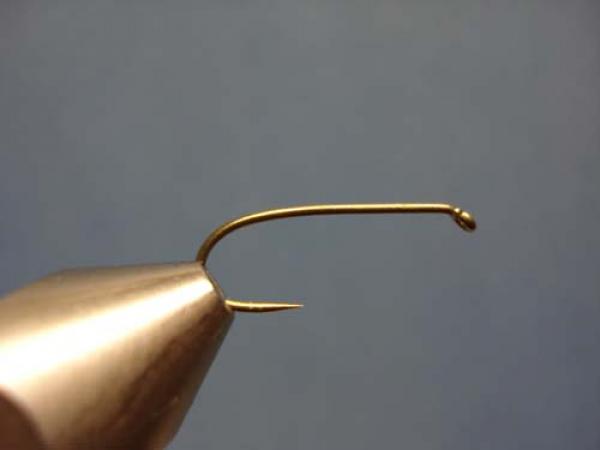
Place hook firmly in your vise.

Lay a base of thread from behind the eye to the bend.

Select and remove 3 fibers from a dyed black (or melanistic) cock pheasant tail.
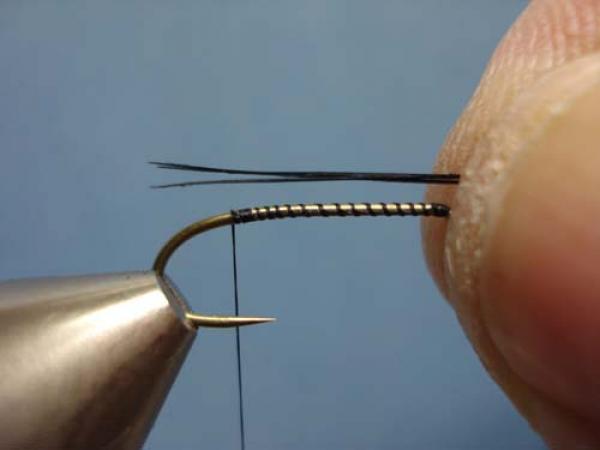
With the tips even, measure the fibers to be equal to the length of the hook. Note this deviates from the normal tail length of a more imitative river nymph pattern.
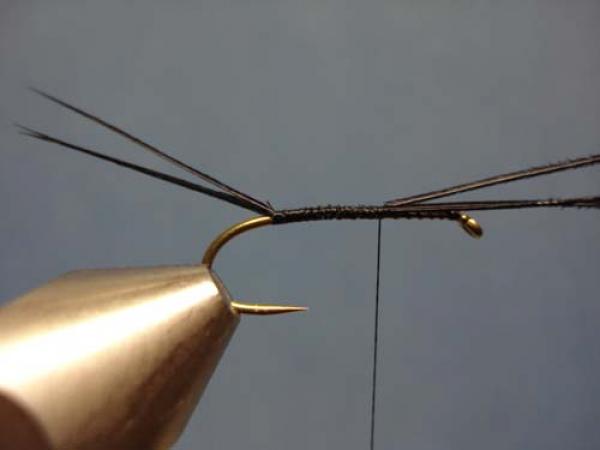
Secure the fibers and wrap to the thorax region. Clip the excess PT fibers.
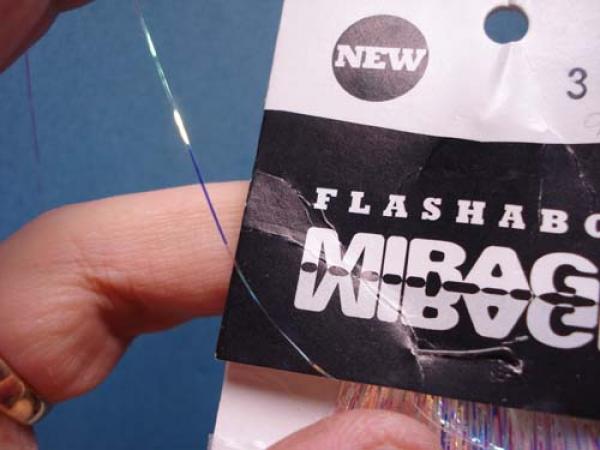
Select a single strand of fine Flashabou Mirage tinsel.

Secure it on the far side of the hook and bind it to the rear as shown, ending at the tail.

Apply a tacky dubbing wax to about 5 inches of the thread.
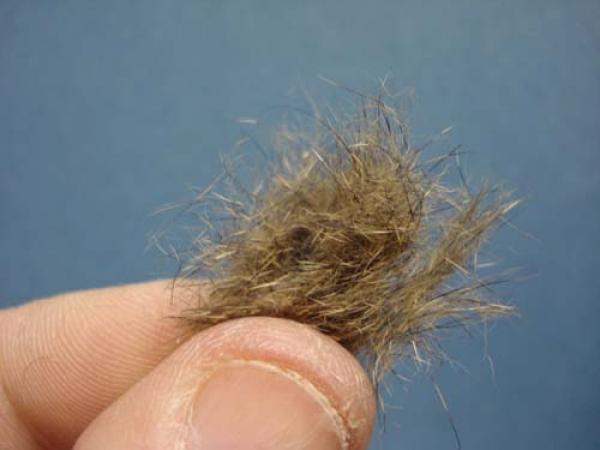
Select a pinch of fox squirrel dubbing, heavily laden with long guard hairs.
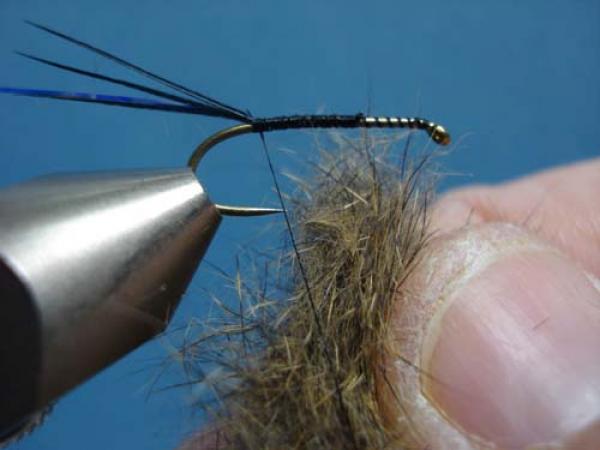
Touch the dubbing to the thread, allowing the wax to capture what it will.
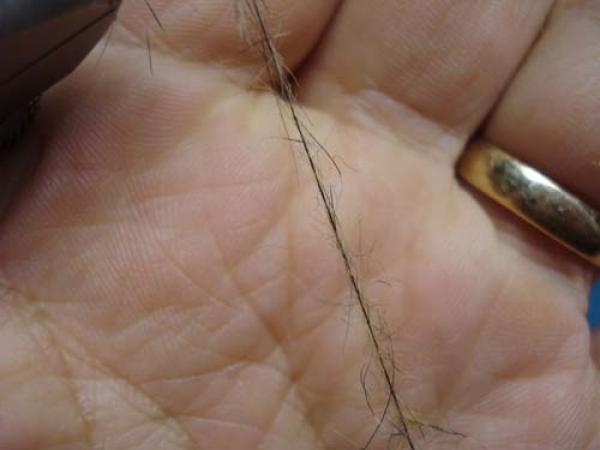
You'll end up with something like this.
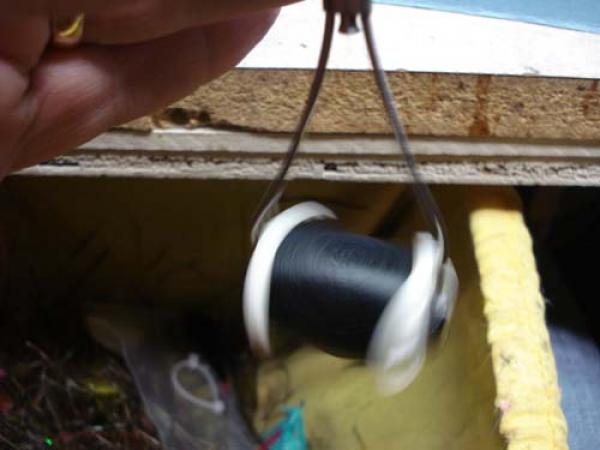
Spin your bobbin holder aggressively to trap the fibers.
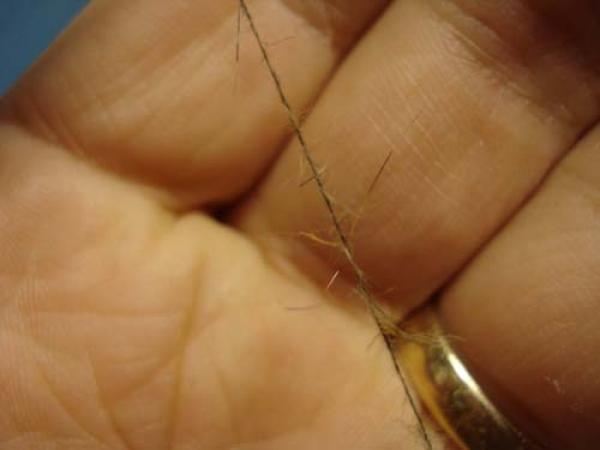
Now you'll have this.
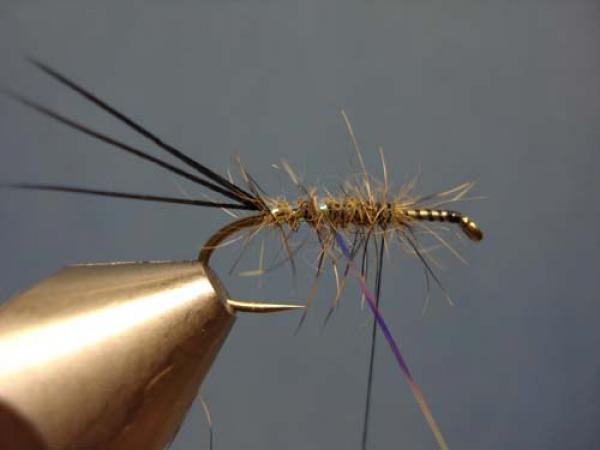
Dub the concoction forward to the middle of the shank or a bit past, and begin to counter-rib the tinsel. I like to make my first rib under the tail.
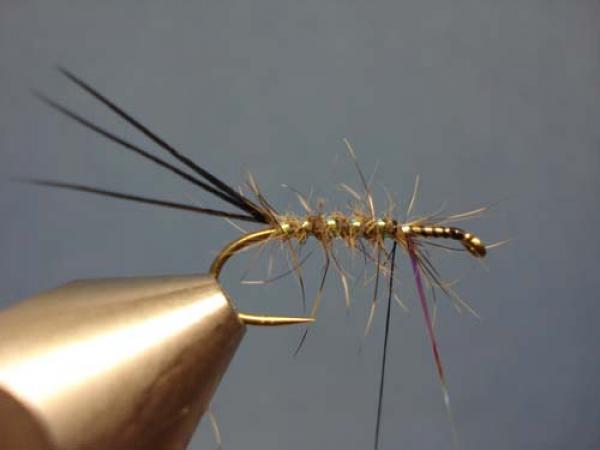
Continue forward in open and even turns, last turn passes in front of the hanging thread...
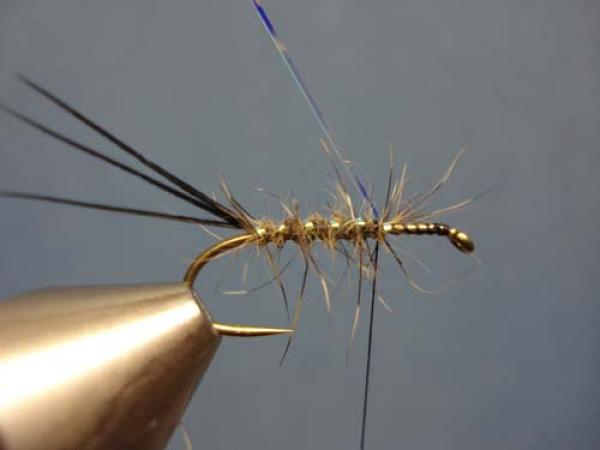
The tinsel then passes under the hook, and is pulled slightly to the rear where a single turn of thread captures it. Remove the excess.
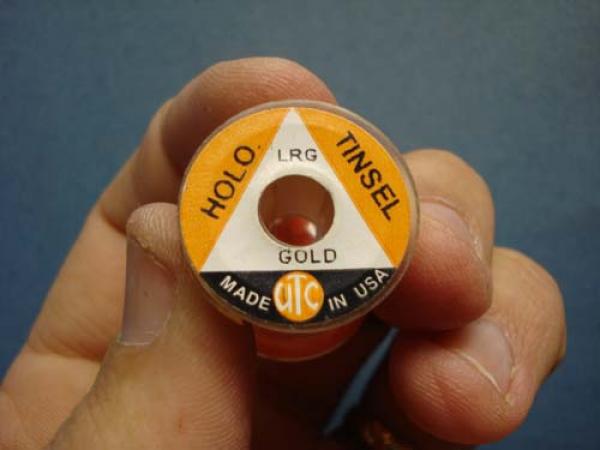
Select a short strand of large-width gold holographic mylar tinsel.

Secure it to the top of the hook over the thorax region and secure it. I tend to make my thoraxes a tad shorter on my lake nymphs than a I do on my river nymphs as I wish to accentuate the slimness of the abdomen.
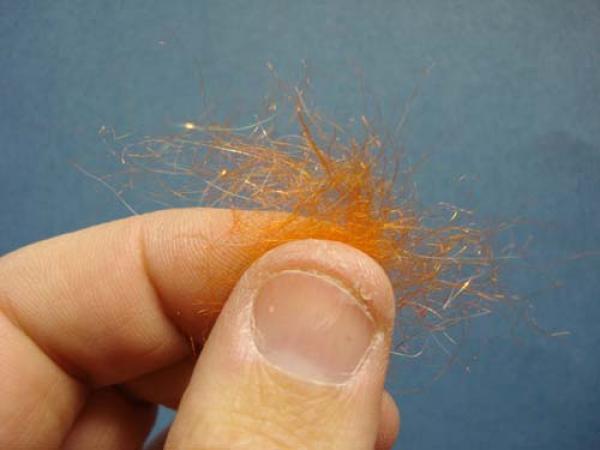
Obtain your desired dubbing for the thorax.
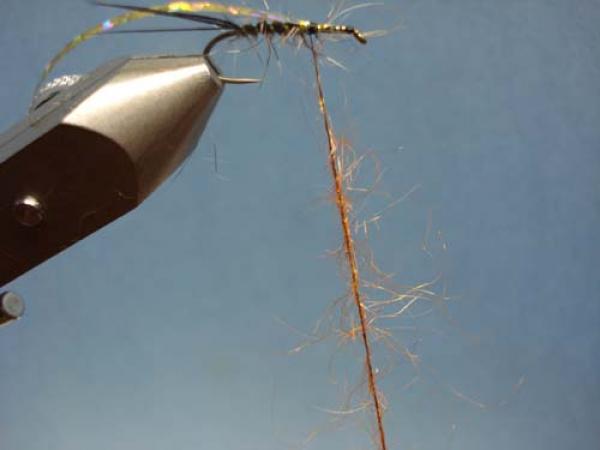
...and touch dub as we did with the squirrel dubbing.
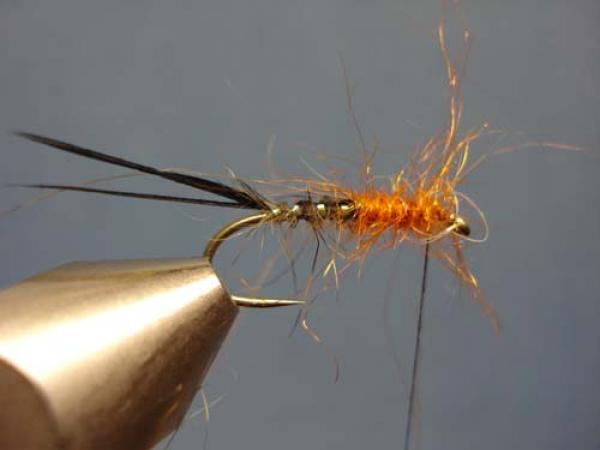
Dub the thorax, encouraging the dubbing to be free and disheveled.
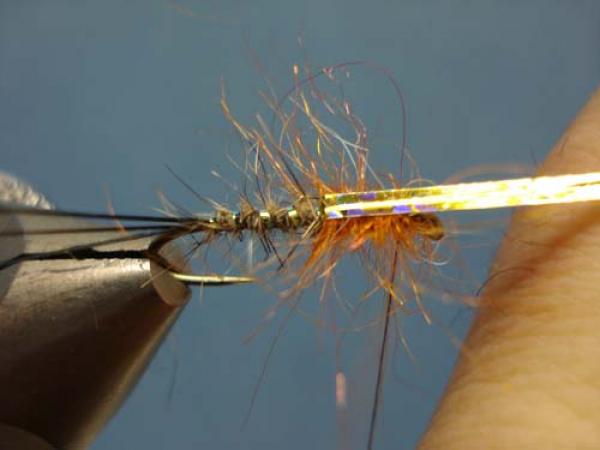
Fold the wing case forward...
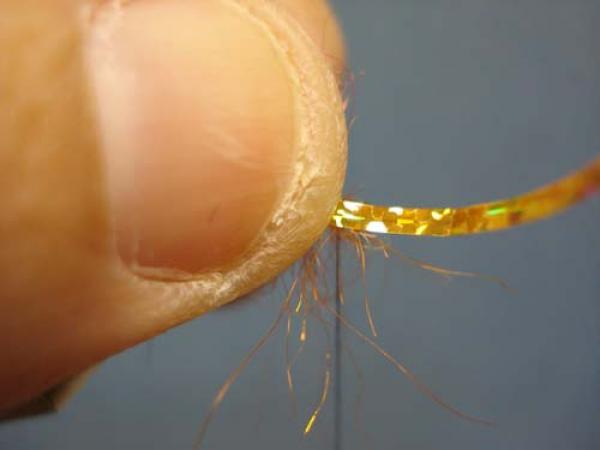
...pinch it down with your thumb and forefinger...
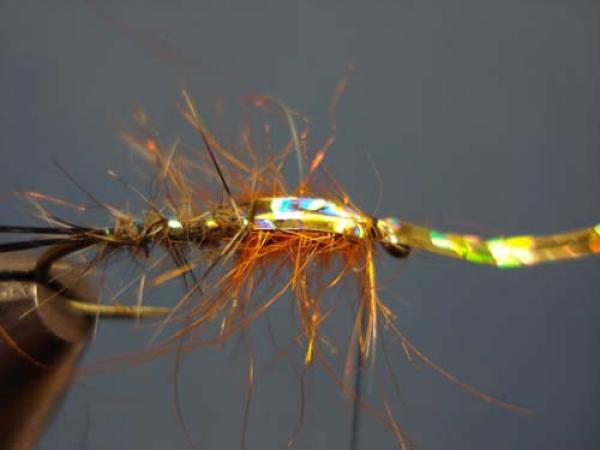
...and secure!
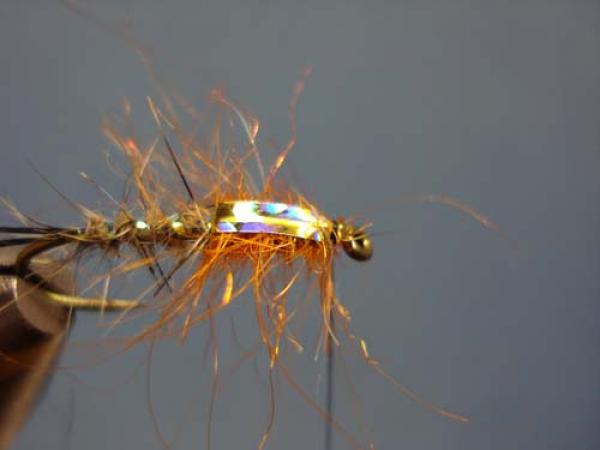
Clip the excess close.
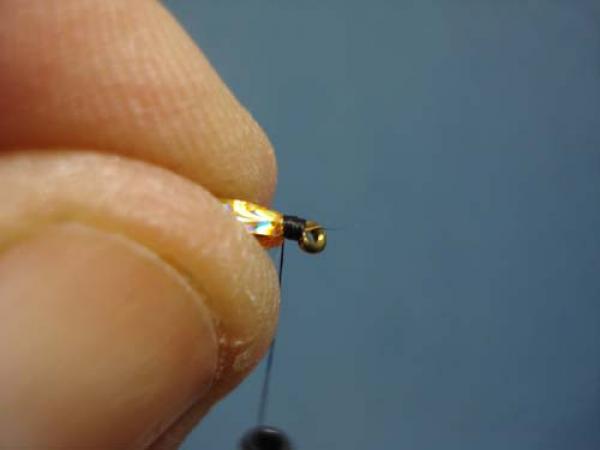
Pull all the fuzz out of the way and build a neat small head. Add a drop of cement.
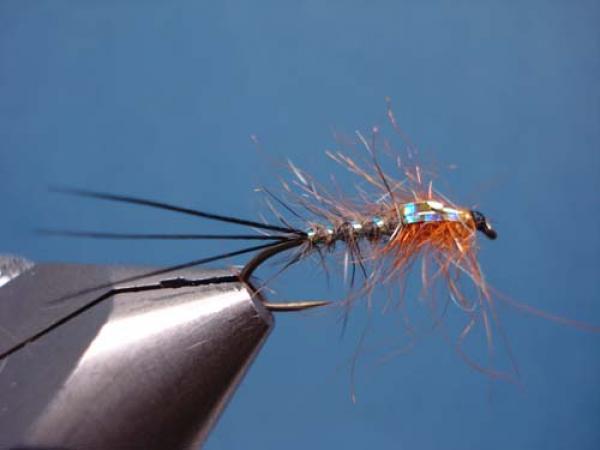
And here you have a super effective Loren's Hare's Ear!